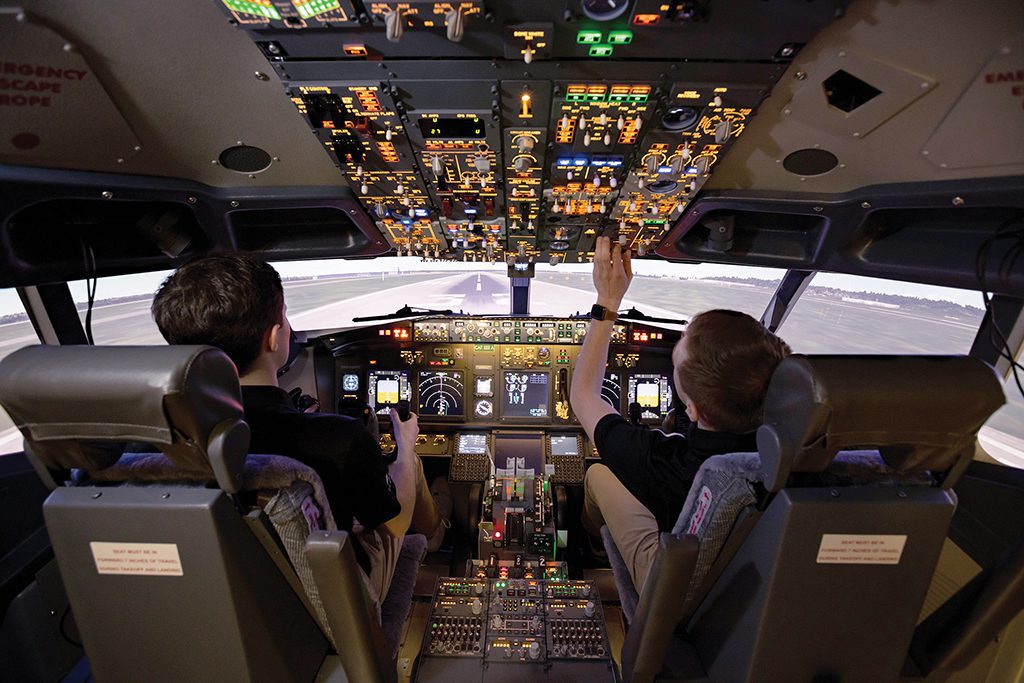“Our mission is to perpetuate the charitable generosity that Ethel S. Abbott demonstrated through her 97 years of life,” said Dorothy Pflug, president of the Ethel S. Abbott Charitable Foundation. “Flight training technologies have evolved tremendously from the aircraft the Pages aused to teach Charles Lindbergh to fly. We are pleased to support the next generation of aviators as they pursue their own dreams of flying.”
Many students previously have never seen or been in anything like the simulator, said Vlasek.
“Where it’s really going to pay off is preparing them to make that transition to flying in jets, which is where you’re seeing that workforce issue, especially at the regional and commuter level of airlines,” he said.
The simulator offers early exposure to an important kind of training for these future professionals, Vlasek noted.
“When they make that jump from doing training to being a flight instructor to flying at that first airline,” he said, “they’ll have some basic understanding of some of the systems.”
Even more important, students gain a better understanding of decision making at 500 miles an hour, Vlasek said.
“We can start to prepare them to make that transition,” he said, “so when they go into training they will have seen these different systems and have been able to react from a critical-thinking standpoint to making decisions faster.”
Ossi said the experience being in the simulator is “scary accurate, and that gets me so excited because this is almost the real thing.”
“It’s truly such a valuable opportunity that we have at our fingertips to use because it’s going to set us up so well,” she added. “It fuels my fire, knowing that I can be in something so similar to where I’m going to be in a few years — just practicing and getting ready for the big moment.”
After she graduates in spring 2025, Ossi plans to put her experience to work in the area. She expects to work as a flight instructor at the Council Bluffs Municipal Airport, where she currently flies, then fly for a regional or charter operation. Her ultimate goal is to be a pilot for a major airline, like her mom.
“Aviation truly has so much to offer. I want to experience as much of it as I can,” Ossi said.
Thanks to the early experience she’s getting in the jet simulator, she and other students in the program will be well prepared to join the workforce and make their mark in the industry.







